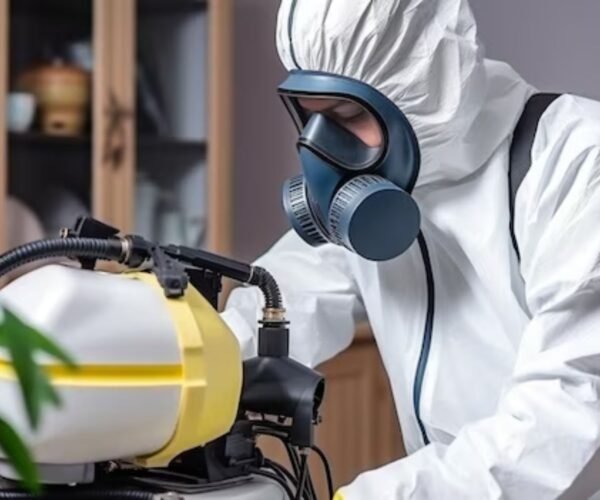Navigating the aftermath of a car accident can be overwhelming, especially when it comes to car smash repairs. Whether it’s a minor scrape or major damage, the process involves several steps, from dealing with insurance companies to choosing the right auto body repair shop.
This guide aims to simplify that journey, providing you with essential tips and practical advice on how to manage car smash repairs Melbourne efficiently and effectively.Let’s dive into the process of restoring your vehicle to its former glory.
Selecting the Right Auto Body Repair Shop
When your car has suffered damage from an accident, finding a reputable and trustworthy auto body repair shop is crucial to ensuring your vehicle is restored to its original condition.
The car smash repairs Melbourne shop you choose will be responsible for repairing your car safely and efficiently, so knowing what factors to consider can significantly impact the outcome.
Factors to Consider When Choosing a Repair Shop
There are several key points you should evaluate to make an informed decision:
– Certifications and Training: Look for smash repairs Melbourne shop with certified repair technicians. Certifications from organisations like the National Institute for Automotive Service Excellence (ASE) indicate that the technicians have met specific qualifications in various aspects of auto repair.
– Experience with Your Car Model: Choose a shop that has experience working with your type of vehicle. Some shops specialise in particular makes or models, which can lead to better, more specialised service.
– Warranty Offered: Inquire about the type of warranty the shop provides on their repair work. A good warranty offers peace of mind that any repair issues will be addressed without additional cost.
– Insurance Company Partnerships: Some repair shops are preferred providers for certain car insurance companies. While these shops generally meet high standards and can process claims quickly, always ensure their service quality aligns with what you need.
– Customer Reviews: Look online for reviews or ask for recommendations from friends and family. Positive feedback from previous customers can be a strong indicator of reliability and quality of service.
Understanding the Repair Process
Knowing what happens after you drop your car off at the body shop can make the repair experience less stressful. The repair process generally involves careful steps to ensure that your car is safely and effectively returned to its pre-accident condition.
Steps Involved in Car Smash Repairs
The typical repair process involves:
– Assessment and Estimation: Initially, the repair team will assess the damage and prepare a detailed estimate of the work needed.
– Disassembly and Ordering Parts: If the project is extensive, the damaged area may need to be disassembled to identify any hidden damage and order necessary replacement parts.
– Structural and Body Repairs: Technicians repair structural damage to the frame and fix or replace damaged body parts.
– Painting and Reassembly: After repairs, the vehicle will be prepped, primed, and painted to match the original colour and finish. Finally, the car is reassembled, including all trims and detail components.
– Final Inspection and Test Drive: This is a quality assurance step to ensure everything has been completed to a high standard and the car operates correctly.
Typical Timeline for Repair Completion
The duration of smash repairs Melbourne can vary depending on several factors, such as the extent of damage, availability of parts, and the repair shop’s current workload. Here’s a rough breakdown:
– Minor Repairs: Small jobs like replacing a bumper or minor painting might take a few days.
– Moderate Repairs: Medium complexity repairs can take one to two weeks.
– Major Repairs: Significant structural repairs involving parts replacements and detailed bodywork might require several weeks.
Understanding these timelines can help you manage your expectations and make necessary arrangements, such as arranging for a rental car if needed.
Dealing with Insurance Companies
After a car accident, one of the first and most crucial steps is dealing with your insurance company. The process can be daunting, but with the right approach, you can navigate through it smoothly and ensure your claim is handled efficiently.
Tips for Filing Insurance Claims
When it’s time to file your insurance claim, clarity and preparedness are your best tools. Here are a few tips to help you along the way:
– Report the Accident Promptly: Most insurance companies have a time limit for reporting accidents. Contact them as soon as possible to avoid any complications with your claim.
– Document Everything: From the accident scene photos to receipts for any expenses incurred (like towing or temporary car rentals), keep a detailed record. These documents are essential for supporting your claim.
– Be Thorough with Details: When describing the incident, be as detailed as possible. This will help the insurance adjuster understand the circumstances fully, making it easier to process your claim.
– Know Your Policy: Understanding what your insurance covers and what it doesn’t is vital. This knowledge will arm you with the information necessary to dispute any discrepancies in the company’s assessment.
– Communicate Effectively: Keep in touch with your adjuster regularly. Ensuring the lines of communication remain open can lead to a quicker, smoother claims process.
Common Mistakes to Avoid When Dealing with Insurance
Navigating through insurance claims can be tricky. Here are some common pitfalls to avoid:
– Not Reading Your Policy: Skipping the details of your own insurance policy can lead to misunderstandings about coverage limits and what is or isn’t covered.
– Admitting Fault: Avoid discussing fault at the scene or admitting responsibility when filing your claim. Let the experts determine who was at fault based on the evidence.
– Accepting the First Offer: Often, the first settlement offer might not fully cover your repair costs. Don’t settle immediately; instead, evaluate the offer and negotiate if necessary.
– Ignoring Time Frames: Failing to adhere to claim filing deadlines can invalidate your claim, leaving you with avoidable expenses.
Cost Considerations
When dealing with car smash repairs after an accident, understanding the cost considerations is crucial. Costs can vary greatly depending on the severity of the damage, the type of car you own, and the repair methods used.
Factors that Impact Repair Costs
Several factors can impact the cost of car smash repairs Melbourne service. First and foremost, the extent of the damage plays a significant role. Minor dents and scratches will obviously cost less to repair compared to a major collision that requires multiple parts replacement.
The make and model of your vehicle also affect the repair costs; luxury and imported cars typically have higher repair costs due to the price of their parts and specialised service requirements. Additionally, the choice of the repair shop is crucial.
Certified smash repairs Melbourne shops may charge more but typically offer higher quality services and guarantees. Lastly, the location of the shop can influence the pricing, as urban centres tend to have higher rates compared to rural areas.
Ways to Save Money on Car Smash Repairs
To save money on car smash repairs, consider the following tips:
– Get multiple quotes: Always shop around and get estimates from several repair shops to compare prices and services.
– Use aftermarket or used parts: Opt for aftermarket or used parts instead of OEM parts to cut down costs significantly. Make sure these parts are compatible and of good quality.
– Negotiate with the repair shop: Some costs in the repair process can be negotiable. Don’t hesitate to discuss pricing options and payment plans.
– Check if a paintless dent repair is an option: For minor dents and dings, paintless dent repair can be a cost-effective and quick solution.
– Use insurance wisely: Understand what your insurance covers and use it to your advantage, but also evaluate if claiming insurance is cost-effective considering your deductibles and the impact on future premiums.
Aftercare Tips
After your car has been repaired, proper maintenance and vigilance are key to ensure everything is functioning as it should.
Maintenance Tips Post-Repair
Maintaining your car post-repair includes following all the recommendations given by your repair shop. Here are some general tips:
– Follow a check-up schedule: If your repair shop recommends a follow-up, make sure to stick to it. This could prevent potential issues from arising.
– Clean your car regularly: Keeping your car clean can prevent rust and allow you to monitor the condition of the repair.
– Check fluid levels and tyre pressure: Ensure all fluids are at the recommended levels and that your tyres are adequately inflated to promote optimal car performance.
Signs to Watch Out for After Getting Your Car Repaired
After getting your car back from the shop, pay attention to the following signs to ensure the repairs were done correctly:
– Unusual noises: Any new, strange sounds from the engine, brakes, or under the car can signify that something wasn’t fixed properly.
– Leaking fluids: Spot checks on where the car is parked can reveal leaks. Any form of dripping fluids should be addressed immediately.
– Alignment issues: If your car is pulling to one side or the steering wheel is off-centre during driving, there might be issues with the alignment that need correction.
– Problems with paint match: Ensure that the paint used in the repaired areas matches the rest of the car. Discrepancies in paint colour or texture are signs of a substandard job.
By understanding these cost implications and aftercare strategies, you can ensure a smoother, more cost-effective car repair process and maintain your vehicle’s condition post-repair.
Conclusion
In the aftermath of a car accident, navigating through car smash repairs Melbourne can be a daunting task, but with the right knowledge and preparation, you can manage the process smoothly and efficiently.
Remember to find a reputable repair shop that specialises in collision repair, understand your insurance coverage, and prepare all necessary documentation to facilitate the claims process.
By staying informed and involved in every step of the process, you ensure that your vehicle is restored to its pre-accident condition with the least amount of stress possible.
Choosing to involve professionals and understanding your rights can significantly influence the outcome of the repairs, potentially saving you time and money.
Remember, safety is paramount; never compromise on the quality of repairs due to cost. A well-repaired car protects its occupants and ensures peace of mind. Safe driving!




